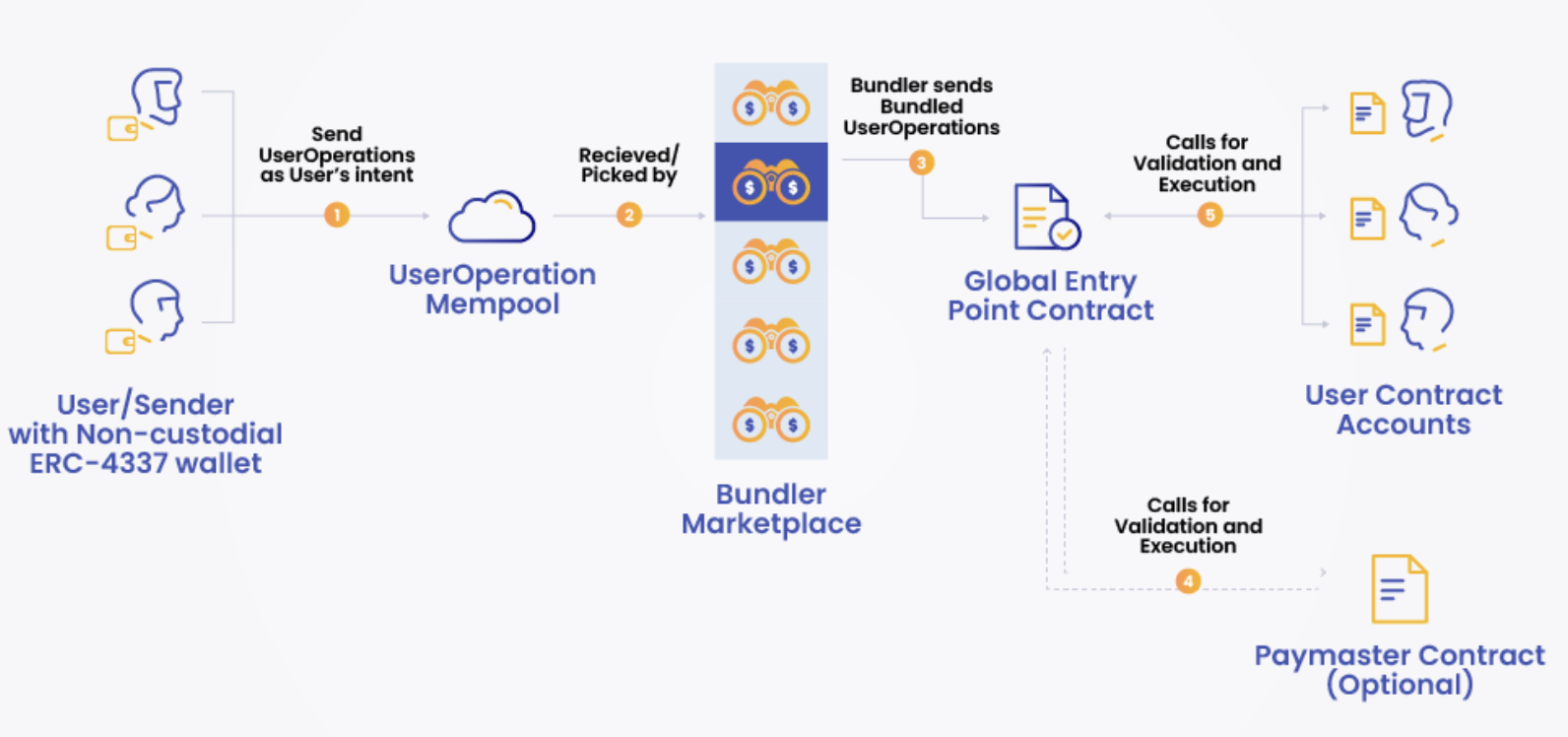Account Abstraction
Account Abstraction aims to enhance user experience by making Ethereum accounts more flexible and functional. It shifts away from Externally Owned Accounts (EOA) and towards Smart Contract Wallets, enabling advanced features such as multi-signature approvals, automated recovery, and custom authentication. Follow here to see the EIP-4337
Overview
EOA vs. Smart Contract Wallet
- Externally Owned Accounts (EOA): Controlled by a private key, EOAs are simple and support only basic operations such as sending Ether or interacting with contracts.
- Smart Contract Wallet: A smart contract wallet operates through code and can implement complex logic like multi-signature authorization, automated recovery, and gas management. They are more versatile and customizable, allowing for features like meta-transactions and custom authentication.
| Feature | EOA | Smart Contract Wallet |
|---|---|---|
| Authentication | Private key | Custom (multi-sig, social recovery, etc.) |
| Gas Payment | Paid by the user | Meta-transactions, gas sponsorship |
| Logic Flexibility | Limited | Programmable logic for authorization, recovery, and more |
Transaction Flow Overview
In Account Abstraction, user operations are streamlined by moving away from traditional EOAs towards smart contract accounts. The transaction flow generally follows these steps:
- User App: The user creates a
UserOperation, which is a structured request containing details about the transaction they want to perform. - Bundler: The
UserOperationis sent to a bundler, which aggregates multiple operations to submit them as a single transaction, minimizing gas fees and improving efficiency. - EntryPoint Contract: The bundler sends the bundled operations to an
EntryPointcontract. This contract handles validation and execution of the operations. - Validation: The
EntryPointchecks eachUserOperationfor correctness and validity (e.g., signature verification, nonce checks, etc.). - Execution: If valid, the
EntryPointexecutes the operation by invoking the associated smart contract wallets.
This flow introduces a more flexible and gas-efficient method for transaction processing, allowing for meta-transactions and other advanced features.

UserOperations
A UserOperation is a new transaction format under EIP-4337 that replaces the conventional transaction model used by EOAs. Instead of directly signing and sending transactions, users create a UserOperation object that is sent to the bundler. This object encapsulates the transaction details such as the sender, target, value, and other metadata.
Key elements include:
- Sender: The address of the smart contract wallet.
- Target: The contract or EOA that will receive the transaction.
- Data: The function call data (if interacting with a contract).
- Gas Limits: Specifies the maximum gas that the operation is allowed to consume.
The separation of operation creation and execution reduces overhead and enables features such as gas sponsorship.
EntryPoint
The EntryPoint contract is central to the account abstraction mechanism. It functions as the router and validator for all incoming user operations. Its main responsibilities are:
- Validation: It verifies the validity of each
UserOperation, including signature verification and ensuring enough gas is provided. - Execution: After validation, the
EntryPointtriggers the execution of the corresponding transaction through the user's smart contract wallet. - Gas Management: The
EntryPointalso handles gas calculations and refunds to ensure fair and predictable costs for bundlers.
By acting as a mediator between user operations and contract wallets, the EntryPoint ensures that only valid and well-formed operations are executed.
Bundler
The bundler plays a crucial role in aggregating multiple UserOperations into a single Ethereum transaction. It optimizes gas costs by batching operations, making the system more efficient and reducing the load on the network. Bundlers are incentivized by taking a small fee for their services, making them an integral part of the decentralized ecosystem.
Signature Verification
Signature verification in smart contract wallets is customizable. This allows users to replace traditional ECDSA-based signatures with multi-signature wallets, biometrics, or social recovery mechanisms.
📄️ Entrypoint
EntryPoint Contract in the Account Abstraction Flow
📄️ User Op
UserOperation (UserOp) Structure
📄️ Bundler
Account Abstraction (AA) redefines the way users interact with blockchains, enabling flexible smart accounts that can execute complex logic beyond simple value transfers. A critical component of this framework is the Bundler, which plays a key role in managing and optimizing the execution of transactions initiated by smart accounts.
📄️ Paymaster
Paymasters are smart contracts that help facilitate transaction sponsorship, allowing third-party-designed mechanisms to pay for transactions. With Axir's Paymaster service, you can manage gas fees for your users effortlessly.